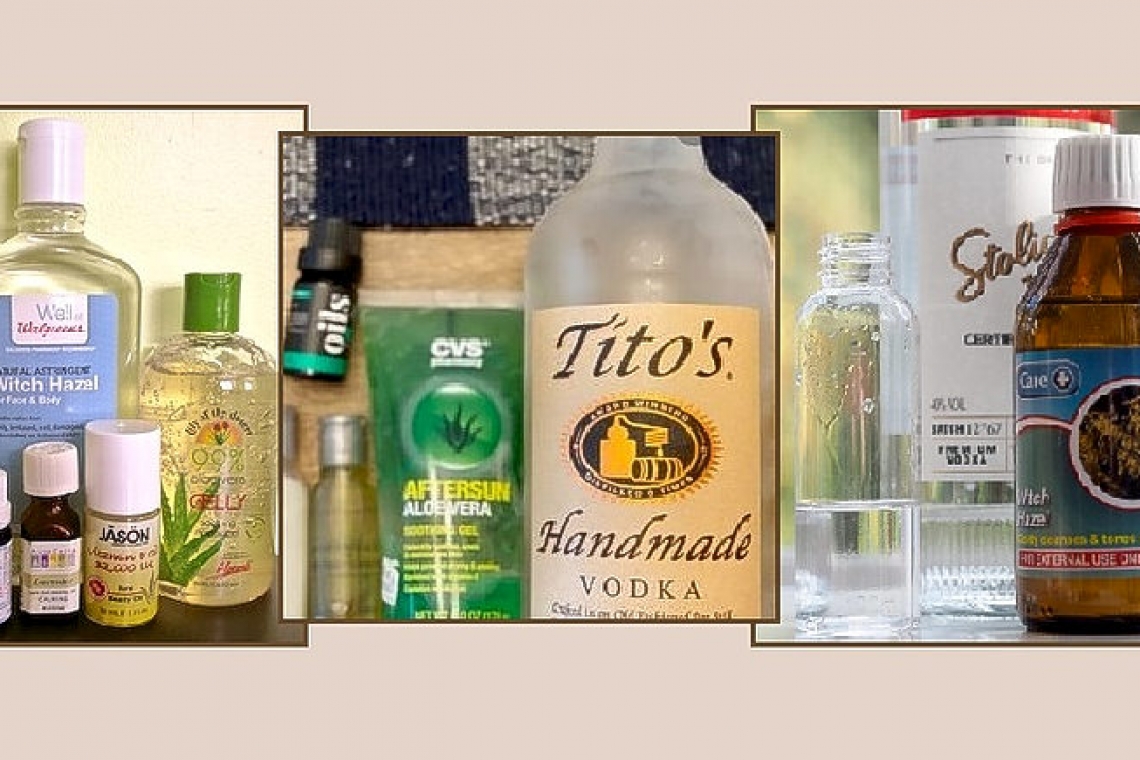Hand sanitizers are flying off shelves all over the globe in light of COVID-2019 preparation, and the islands are no different. Stores, pharmacies – and even Amazon – are having trouble keeping up with demand. Home-made sanitizer recipes are popping up all over the internet – it’s only natural, and it seems like a logical step to ensure affordable access to the product. However, the concoctions are a little more complicated than they’re made out to be, and many homemade sanitizers are ineffective, or can cause damage to your skin.
First off, washing your hands is better, and less expensive, than using hand sanitizer – it’s also guaranteed to be more effective. Simply wash your hands, unless it’s not a practical option. If using a sanitizer, make sure it’s at least 60% alcohol, which is effective against the new coronavirus (although it does not kill all viruses).
Most recipes call for 2/3 cup of alcohol, 1/3 cup aloe vera gel, and essential oils to combat the smell and soothe the skin. However, the ratio is hard to get right (even if you stick to a recipe), the essential oils don’t provide any extra benefits and can also irritate the skin, and some alcohols are becoming harder to find due to the extra consumer demand. Turning to other forms of alcohol is ineffective and causes a false sense of security.
“To have a hand sanitiser that works both as an anti-bacterial and an anti-viral agent, you need the right mix of isopropyl alcohol (or isopropanol) and ethanol, as well as other ingredients that mask the smell and prevent the alcohol from drying out the hands,” UNSW infection control expert Professor Mary-Louise McLaws told The Sydney Morning Herald. And, “trying to get the correct level of isopropyl alcohol and ethanol is potentially a fire risk.”
Tricky ratios
Making homemade hand sanitizer isn’t as simple as adding together fractions. According to Cleveland.com news source, “The chemistry and math involved are complicated, and there’s no guarantee that any of these recipes will end with the right alcohol percentage.
“The ratio of rubbing alcohol to aloe vera is 2/3 cup to 1/3 cup, which could work out to about 62 percent alcohol,” John Protaciewicz, chair of Case Western Reserve University’s Chemistry Department, said. That’s above the CDC guidelines.
“That’s not a fool-proof recipe, though.” Protaciewicz said that calculation doesn’t take into account the interaction between a gel and a liquid, which could lead to the alcohol being diluted differently. It would also depend on ingredients in both the rubbing alcohol and the aloe vera gel.
“A popular recipe circulating online suggests using 2/3 cups of either 99 percent rubbing alcohol (isopropyl alcohol) or ethanol (ethyl alcohol or alcohol) as the main antimicrobial active ingredient, resulting in roughly 66 percent active content in the final product,” Birnur Aral, PhD and the Health, Beauty and Environmental Sciences Director at the Good Housekeeping Institute told Men’s Health.
“However, there is a nuance in the FDA’s rule governing the hand sanitizer product category regarding the different actives recommended as being safe and effective. The rule states that the minimum recommended level for isopropyl alcohol is 70 percent in the final product as opposed to the minimum of 60 percent for ethyl alcohol. So if you use isopropyl alcohol at the recommended 2/3 cup level in the recipe, the active level would fall short of the recommended 70 percent.”
If ethanol is used instead, the recipe should theoretically meet the minimum of 60 percent required by the FDA rule.
Vodka and other types of alcohol
Cleveland.com also noted the trend of using other forms of alcohol as alternatives: “Turning to other types of commercial alcohol is a bad idea, especially denatured alcohol. Denatured alcohol contains ethanol, which could lead you to think it might be a worthwhile substitute. But ingredients are added to the bottles of denatured alcohol for effectiveness and to make it poisonous, so people can’t drink it. Those ingredients can be dangerous if absorbed through the skin and can also irritate your hands.”
Using vodka, for example, won’t meet the required alcohol percentage. “If you see an 80 proof bottle of Tito’s Vodka, it’s going to work out to about 40 percent alcohol – already ineffective.” The company even took to Twitter to dissuade the public from using its product to make homemade sanitizer.
In short, if you insist on making your own, take these considerations on board, but washing your hands is much simpler, safer, and guaranteed effective. Also consider that companies that produce sanitizers, with the correct formulations, are ramping up production in response to the increasing demand.
Photo compilation: various blogs







